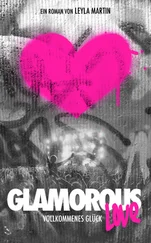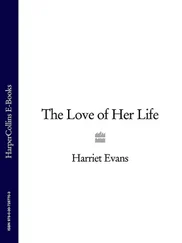Harriet Martineau - Eastern Life
Здесь есть возможность читать онлайн «Harriet Martineau - Eastern Life» — ознакомительный отрывок электронной книги совершенно бесплатно, а после прочтения отрывка купить полную версию. В некоторых случаях можно слушать аудио, скачать через торрент в формате fb2 и присутствует краткое содержание. Жанр: unrecognised, на английском языке. Описание произведения, (предисловие) а так же отзывы посетителей доступны на портале библиотеки ЛибКат.
- Название:Eastern Life
- Автор:
- Жанр:
- Год:неизвестен
- ISBN:нет данных
- Рейтинг книги:5 / 5. Голосов: 1
-
Избранное:Добавить в избранное
- Отзывы:
-
Ваша оценка:
- 100
- 1
- 2
- 3
- 4
- 5
Eastern Life: краткое содержание, описание и аннотация
Предлагаем к чтению аннотацию, описание, краткое содержание или предисловие (зависит от того, что написал сам автор книги «Eastern Life»). Если вы не нашли необходимую информацию о книге — напишите в комментариях, мы постараемся отыскать её.
Eastern Life — читать онлайн ознакомительный отрывок
Ниже представлен текст книги, разбитый по страницам. Система сохранения места последней прочитанной страницы, позволяет с удобством читать онлайн бесплатно книгу «Eastern Life», без необходимости каждый раз заново искать на чём Вы остановились. Поставьте закладку, и сможете в любой момент перейти на страницу, на которой закончили чтение.
Интервал:
Закладка:
The first view of the temple from a distance is very striking, – its area pillars standing forth from the rock, like the outworks of the Entrance gate of a mountain. This temple is of the time of the great Ramases, and is dedicated to Phthah, – the god of Artisan Intellect and Lord of Truth: 53– not the god of Truth, which had its own representative deity; but the possessor of truth, by which he did his creative works. He is the efficient creator, working in reality and by fundamental principles, and not by accommodation or artifice. The scarabaeus was sacred to him (though not exclusively) and the frog: the latter as signifying the embryo of the human species; the former, as some say, because the beetle prepares a ball of earth, and there deposits its eggs, and thus presents an image of the globe and its preparation for inhabitancy. However this may be, here we have the creative god, the son of Kneph, the ordaining deity, at whose command he framed the universe. It may be remembered that this was the deity to whom, according to tradition, the first temple was raised in Egypt; – when Menes, having redeemed the site of Memphis from the waters, began the city there, and built the great temple of Phthah, renowned for so many ages afterwards. – Memphis and this Garf Hoseyn formerly bore the same name, derived from their deity: – viz., Phthahei or Thyphthah. His temple has been found by some travellers as imposing as any on the Nile. It has been compared even with Aboo-Simbil. This must be owing, I think, to the singular crowding of the colossi within a narrow space; and perhaps also to the hoary, blackened aspect of this antique speos. The impression cannot possibly arise from any beauty or true grandeur in the work, – to which the inspiration of the god seems to have been sadly wanting. We saw nothing ruder than this temple; which yet is grand in its way.
The whole of it is within the rock except the area. The area has four columns in front, and four Osirides. These colossi are round-faced and ugly, and have lost their helmets, and some their heads. One head lies topsy-turvy, the placid expression of the face contrasting strangely with the agony of its position. The colossi do not hold the crosier and flagellum in their crossed hands, as usual; but both in the right hand, while the left arm hangs by the side. On the remnant of the wall of the area are some faint traces of sculpture, and two niches, containing three figures each. – The striking moment to the visitor is that of entering the rock. He finds himself among six Osirides which look enormous from standing very near each other; – themselves and the square pillars behind them seeming to fill up half the hall. These figures are, after all, only eighteen feet high: and of most clumsy workmanship; – with short, thick legs, short, ill-shaped feet, and more bulk than grandeur throughout. I observed here, as at Aboo-Simbil, that the wide separation between the great toe and the next seems to tell of the habitual use of sandals.
In the walls of the aisles behind the Osirides are eight niches, each containing three figures in high relief. In every niche the figures are represented, I think, in the same attitude, – with their arms round one another's necks; but they bear different symbols. The middle figure of every group is Ra, as patron of Ramases; and he is invoked as dwelling at Subooa and Dirr, as well as here; the three temples being, as we have seen, of one group or family. Ra is here called the son of Phthah and Athor. The sculptures on the wall are now much blackened by the torches of visitors, and perhaps by Arab fires. But the bright colours, of which traces yet remain, may have much ameliorated the work in its own day. Across the usual corridor, with its usual pair of chambers, inhabited by bats, lies the Holy Place. It has an altar in the middle, and a recess with four figures. The goddess Anouké, crowned with her circlet of feathers, and Athor are here.
This temple extends only one hundred and thirty feet into the rock. Its position and external portico are its most striking features.
We returned by the village, and certainly should not have found out for ourselves that the people are the savages they are reputed to be. They appeared friendly, cheerful, and well-fed. We looked into some houses, and found the interiors very clean. Many of the graves of their cemetery have jars at the head, which are duly filled with water every Friday, – the Mohammedan Sabbath. The door of a yard which we passed in the village had an iron knocker, of a thoroughly modern appearance. I wonder how it came there.
There was a strong wind this evening, and the boat rolled so much as to allow of neither writing nor reading in comfort. We were not sorry therefore to moor below Dendoor at 10 P.M., and enjoy the prospect of a quiet night, and another temple before breakfast.
1 Appendix C.
2 Hypaethral – open to the sky.
3 Ipsamboul.
4 Herodotus tells us (ii. 128) that the Egyptians so hated the Pharaohs who built the two largest pyramids that they would not pronounce their names; but called those edifices »by the name of the shepherd Philitis, who in those times led his flocks to pasture in their neighbourhood.« Is the slyness of this notice attributable to the priests or the prudential historian?
5 Herod. ii. 143.
6 Herod. ii. 144, 146.
7 Herod. ii. 145.
8 Bunsen, »Egypt's Place in the World's History.«
9 Herod. ii. 99.
10 Herod. ii. 100.
11 Herod. ii. 125.
12 Supposed about B. C. 1706.
13 B. C. 1556.
14 Wilkinson's Ancient Egyptians, i. p. 54.
15 Wilkinson's Ancient Egyptians, i. p. 55.
16 Pictorial History of Palestine, i. p. 186.
17 It is probable that no one will contend for the accuracy of the numbers as they stand in the Mosaic history; for taking the longest term assigned for the residence of the Hebrews in Egypt – 430 years – and supposing the most rapid rate of increase known in the world, their numbers could not have amounted to one-third of that assigned.
18 Sharpe's History of Egypt, p. 37.
19 Herod. ii. 154.
20 Herod. ii. 30.
21 Herod. iv. 42. A strong indication of the truth of this story is found in the simple remark of Herodotus that he cannot believe the navigators in one of their assertions, that they had the sun on their right hand.
22 In Critias.
23 Herod. iii. 25.
24 Herod. iii, 27.
25 Herod. iii. 29.
26 Proclus says that Socrates, as well as Plato, learned the doctrine of the Immortality of the Soul from the Egyptians. If so, his great master, Anaxagoras, was probably – almost certainly – the channel through which he received it.
27 Not the geometrician.
28 Herod. ii. 104.
29 Herod. ii. 77.
30 Herod. ii. 95.
31 Herod. ii. 81.
32 Herod. ii. 92
33 Herod. ii. 35.
34 Herod. ii. 37.
35 Herod. ii. 91.
36 Penny Cyclopaedia; Article: COPTIC LANGUAGE.
37 Plutarch de Is. ix.
38 In Timaeo.
39 Diod. i. 74.
40 Herod. ii. 164.
41 Herod. ii. 84.
42 Herod. ii. 35.
43 Sharpe's History of Egypt, p. 146.
44 Wilkinson's Ancient Egyptians, iv. 387.
45 Relation de l'Egypte. Livre i. ch. 4.
46 Herod. ii. 4, 50, 58, 146.
47 Manetho says that Amun means »concealment.«
48 Wilkinson's Ancient Egyptians, v. 435.
49 Wilkinson's Ancient Egyptians, iv. 388.
50 Cromwell to Vice-Admiral Goodson at Jamaica: – »Make yourselves as strong as you can to beat the Spaniard, who will doubtless send a good force into the Indies. I hope, by this time, the Lord may have blessed you to have light upon some of their vessels – whether by burning them in their harbours or otherwise.« – Cromwell's Letters and Speeches, vol. iii. p. 156.
51 Wilkinson's Modem Egypt and Thebes, ii, 319.
Читать дальшеИнтервал:
Закладка:
Похожие книги на «Eastern Life»
Представляем Вашему вниманию похожие книги на «Eastern Life» списком для выбора. Мы отобрали схожую по названию и смыслу литературу в надежде предоставить читателям больше вариантов отыскать новые, интересные, ещё непрочитанные произведения.
Обсуждение, отзывы о книге «Eastern Life» и просто собственные мнения читателей. Оставьте ваши комментарии, напишите, что Вы думаете о произведении, его смысле или главных героях. Укажите что конкретно понравилось, а что нет, и почему Вы так считаете.












